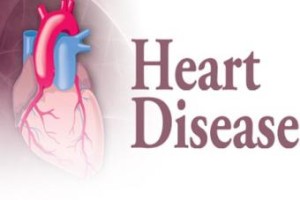- Home
- Editorial
- News
- Practice Guidelines
- Anesthesiology Guidelines
- Cancer Guidelines
- Cardiac Sciences Guidelines
- Critical Care Guidelines
- Dentistry Guidelines
- Dermatology Guidelines
- Diabetes and Endo Guidelines
- Diagnostics Guidelines
- ENT Guidelines
- Featured Practice Guidelines
- Gastroenterology Guidelines
- Geriatrics Guidelines
- Medicine Guidelines
- Nephrology Guidelines
- Neurosciences Guidelines
- Obs and Gynae Guidelines
- Ophthalmology Guidelines
- Orthopaedics Guidelines
- Paediatrics Guidelines
- Psychiatry Guidelines
- Pulmonology Guidelines
- Radiology Guidelines
- Surgery Guidelines
- Urology Guidelines
Riskier jobs are linked to heart diseases

New York: A new research has found wide variation in the cardiovascular risk depending on job profiles. If you are 45 or older and in sales or office-support job, you may be at a higher risk of heart disease and stroke than workers in management or professional jobs, the study reveals.
"The lower the number of ideal cardiovascular risk factors are, the easier it becomes to predict their future health problems, including premature death, heart disease, stroke and kidney disease," said lead researcher Captain Leslie MacDonald from National Institute for Occupational Safety and Health.
But, among the study's group of older workers, it was difficult to achieve ideal levels for all the risk factors. In fact, no one did, largely because of the difficulty in achieving an ideal diet, MacDonald added.
The paper was presented at the American Heart Association's Lifestyle 2016 meeting.
The study involved 5,566 employed men and women, who did not have a history of heart disease or stroke.
To assess workers' health, the researchers examined seven modifiable risk factors derived from the American Heart Association's "Life's Simple 7," an action plan for reducing heart disease and stroke risk.
Workers earned ideal scores if, without medicines, their blood pressure readings were lower than 120/80 mm Hg; total cholesterol was below 200 mg/dL; and/or blood glucose was lower than 100 mg/dL while fasting or 140 without fasting.
Nearly 22 percent of transportation/material moving workers were smokers, the highest smoking rate among the occupation groups included in the study.
Management/professionals was the category of workers that had better cardiovascular health than the other categories.
More than 88 per cent of workers aged 45 or older and did not smoke and 78 percent had ideal glucose levels.
Less than 40 per cent of the workers had "ideal cardiovascular health" in five other measures.
Work conditions such as long working hours and low job control have been linked to metabolic and behavioural risk factors, which may contribute to the group differences found in the study.
"It's important to take small steps and not get overwhelmed or discouraged. Such small steps could include using lunch breaks, to go for a walk rather than working through lunch, parking farther away from destinations, or taking the stairs instead of the elevator,” MacDonald explained.
"The lower the number of ideal cardiovascular risk factors are, the easier it becomes to predict their future health problems, including premature death, heart disease, stroke and kidney disease," said lead researcher Captain Leslie MacDonald from National Institute for Occupational Safety and Health.
But, among the study's group of older workers, it was difficult to achieve ideal levels for all the risk factors. In fact, no one did, largely because of the difficulty in achieving an ideal diet, MacDonald added.
The paper was presented at the American Heart Association's Lifestyle 2016 meeting.
The study involved 5,566 employed men and women, who did not have a history of heart disease or stroke.
To assess workers' health, the researchers examined seven modifiable risk factors derived from the American Heart Association's "Life's Simple 7," an action plan for reducing heart disease and stroke risk.
Workers earned ideal scores if, without medicines, their blood pressure readings were lower than 120/80 mm Hg; total cholesterol was below 200 mg/dL; and/or blood glucose was lower than 100 mg/dL while fasting or 140 without fasting.
Nearly 22 percent of transportation/material moving workers were smokers, the highest smoking rate among the occupation groups included in the study.
Management/professionals was the category of workers that had better cardiovascular health than the other categories.
More than 88 per cent of workers aged 45 or older and did not smoke and 78 percent had ideal glucose levels.
Less than 40 per cent of the workers had "ideal cardiovascular health" in five other measures.
Work conditions such as long working hours and low job control have been linked to metabolic and behavioural risk factors, which may contribute to the group differences found in the study.
"It's important to take small steps and not get overwhelmed or discouraged. Such small steps could include using lunch breaks, to go for a walk rather than working through lunch, parking farther away from destinations, or taking the stairs instead of the elevator,” MacDonald explained.
Captain Leslie MacDonaldcardiovascularHeart diseaseKidney DiseaseNational Institute for Occupational Safety and Healthstroke
Source : IANSNext Story
NO DATA FOUND

Disclaimer: This site is primarily intended for healthcare professionals. Any content/information on this website does not replace the advice of medical and/or health professionals and should not be construed as medical/diagnostic advice/endorsement or prescription. Use of this site is subject to our terms of use, privacy policy, advertisement policy. © 2020 Minerva Medical Treatment Pvt Ltd